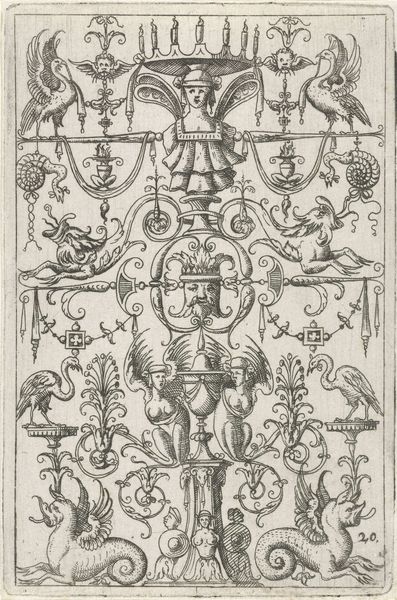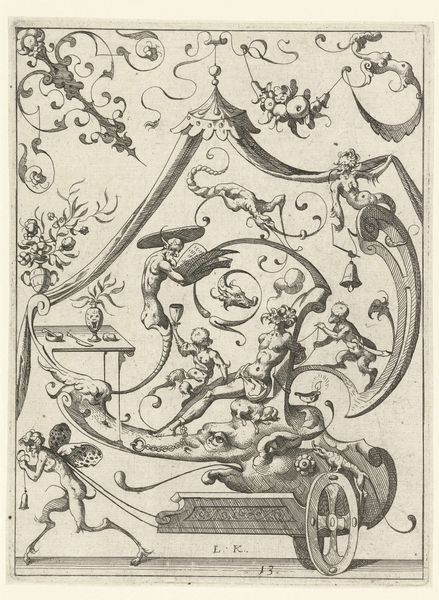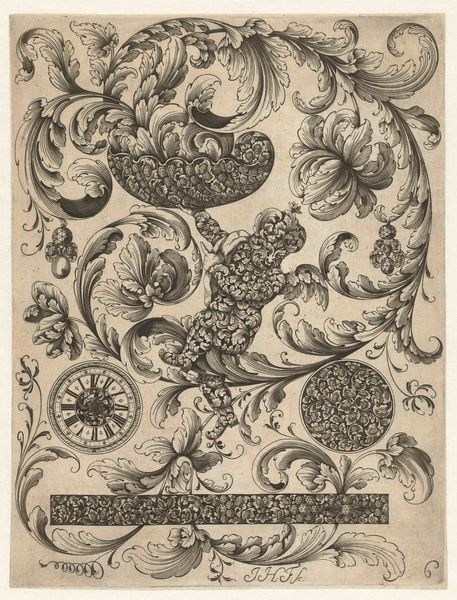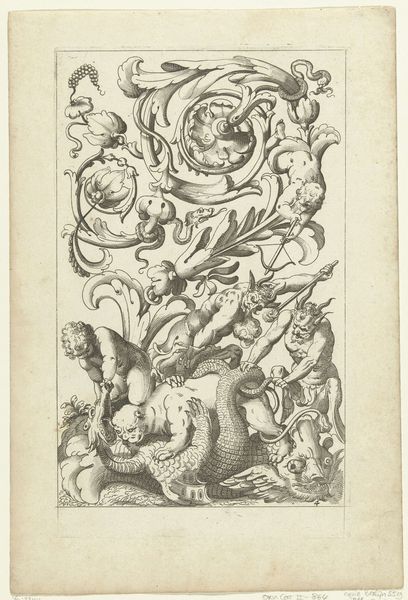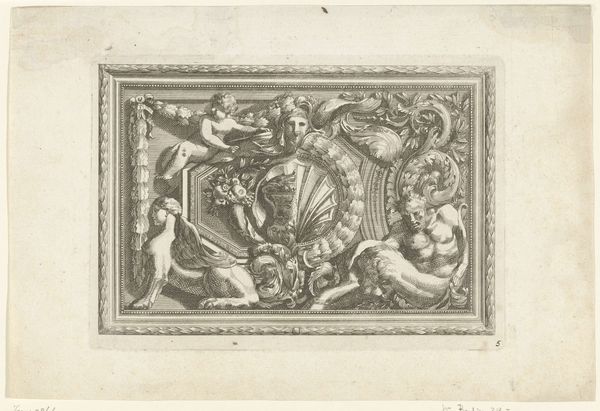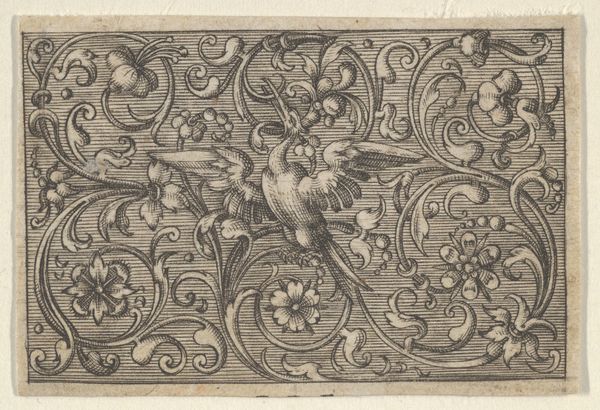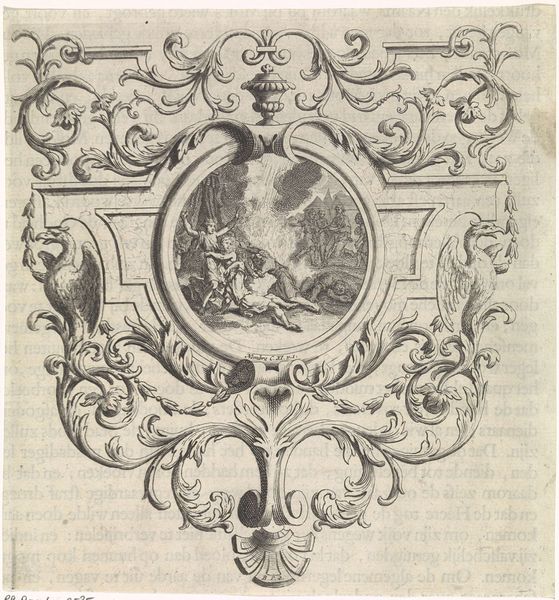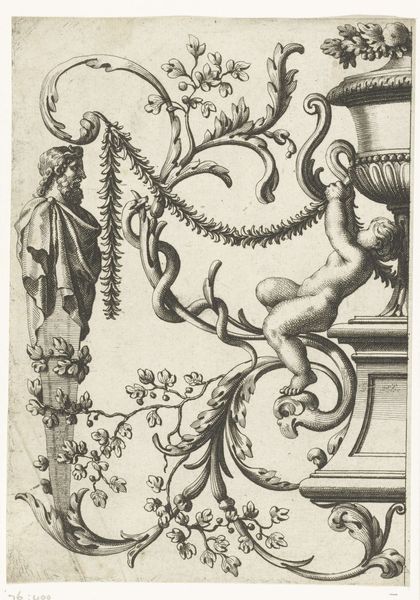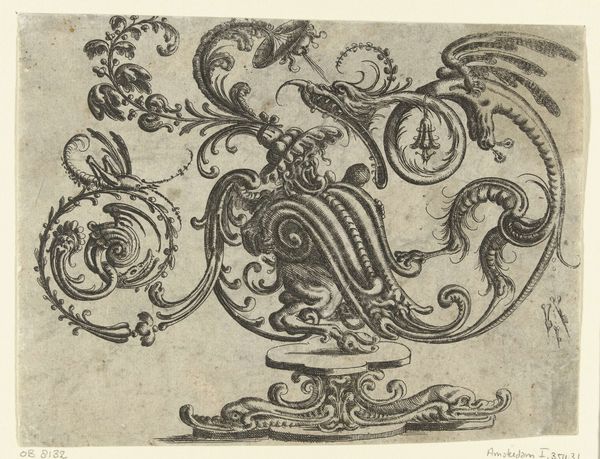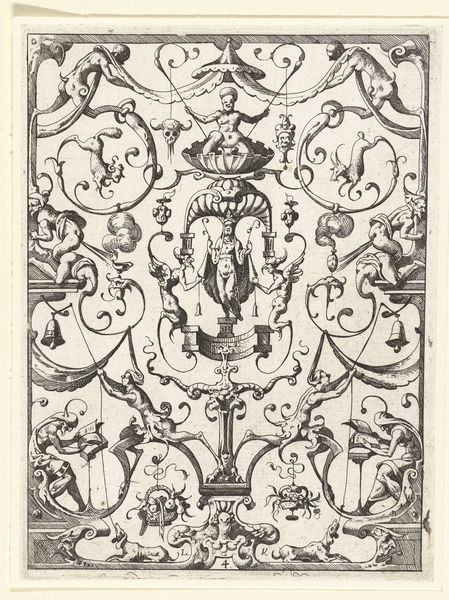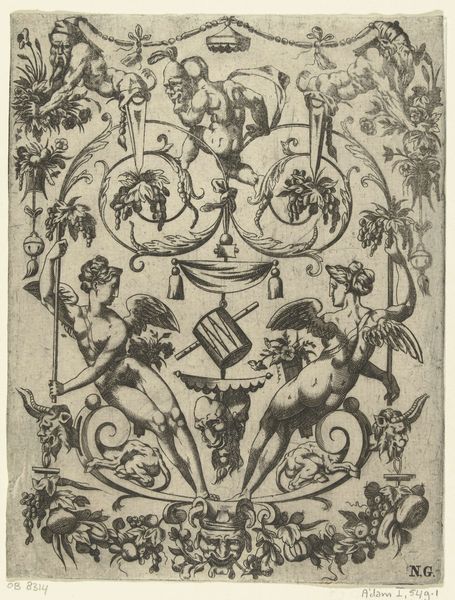
engraving
#
baroque
#
decorative-art
#
engraving
Dimensions: height 132 mm, width mm
Copyright: Rijks Museum: Open Domain
Curator: Welcome. Before us, we have “Guirlande van fruit,” an engraving dating roughly from 1707 to 1725, currently held here at the Rijksmuseum. Editor: It’s striking—so ornate! The sheer density of detail, with the scrolling acanthus leaves and overflowing bounty of fruits. It feels almost aggressively decorative, opulent even. Curator: Yes, and the medium is key. This wasn’t about high art painting, but about mass reproduction and dissemination of ornament. Engravings like these functioned as models, circulating among artisans and craftsmen to inform their own decorative schemes in furniture making, architecture or even the design of tableware. Editor: So it’s about democratization then, taking aesthetics, which were reserved for the elite, and making them attainable for the common craftsman to incorporate elements into their products? To participate in the look and feel, at least. It seems like an early version of consumer culture. Curator: Precisely! Think about the labour involved, too—the engraver meticulously translating textures and forms into linear patterns suitable for printmaking. And the fruits themselves; they signify wealth and trade. I wonder about access to the products of colonialist exploits – who exactly benefits from the fruits shown? The fruit is prominently on display while many involved in producing the bounty were definitely not benefitting. Editor: Right, the fruits also represent cultural norms in the same manner: ripe, idealized and devoid of any signs of imperfection and, ultimately, decay. This decorative abundance perhaps masked inequalities of its time, almost romanticizing its era? Curator: It prompts a re-examination of our relationship to consumer goods, doesn’t it? What meaning did this type of illustration of fruit possess for consumers in that time, what expectations did it generate in terms of products for everyday consumption? Editor: The visual language here, of overflowing excess, and availability is timeless and still heavily informs design today. Even the placement, the carving, looks ready to topple, fall on the consumer. How the presentation of goods also evokes class. It’s much to chew on. Curator: A fruitful discussion indeed, that prompts an assessment of values surrounding both production and presentation of material objects. Editor: A good reminder for contemporary discourse about consumption. I wonder about this work now intersecting with movements that reject harmful economic models or offer alternatives to a value system which this print both reflects and affects.
Comments
No comments
Be the first to comment and join the conversation on the ultimate creative platform.
